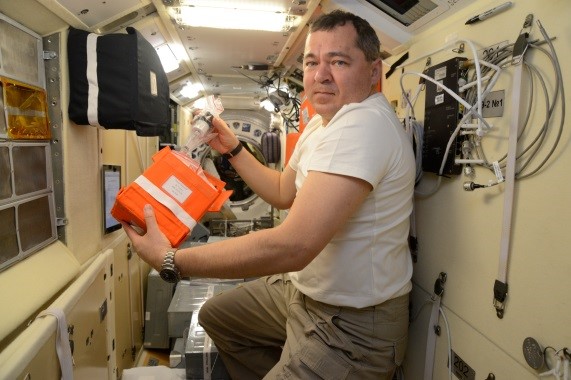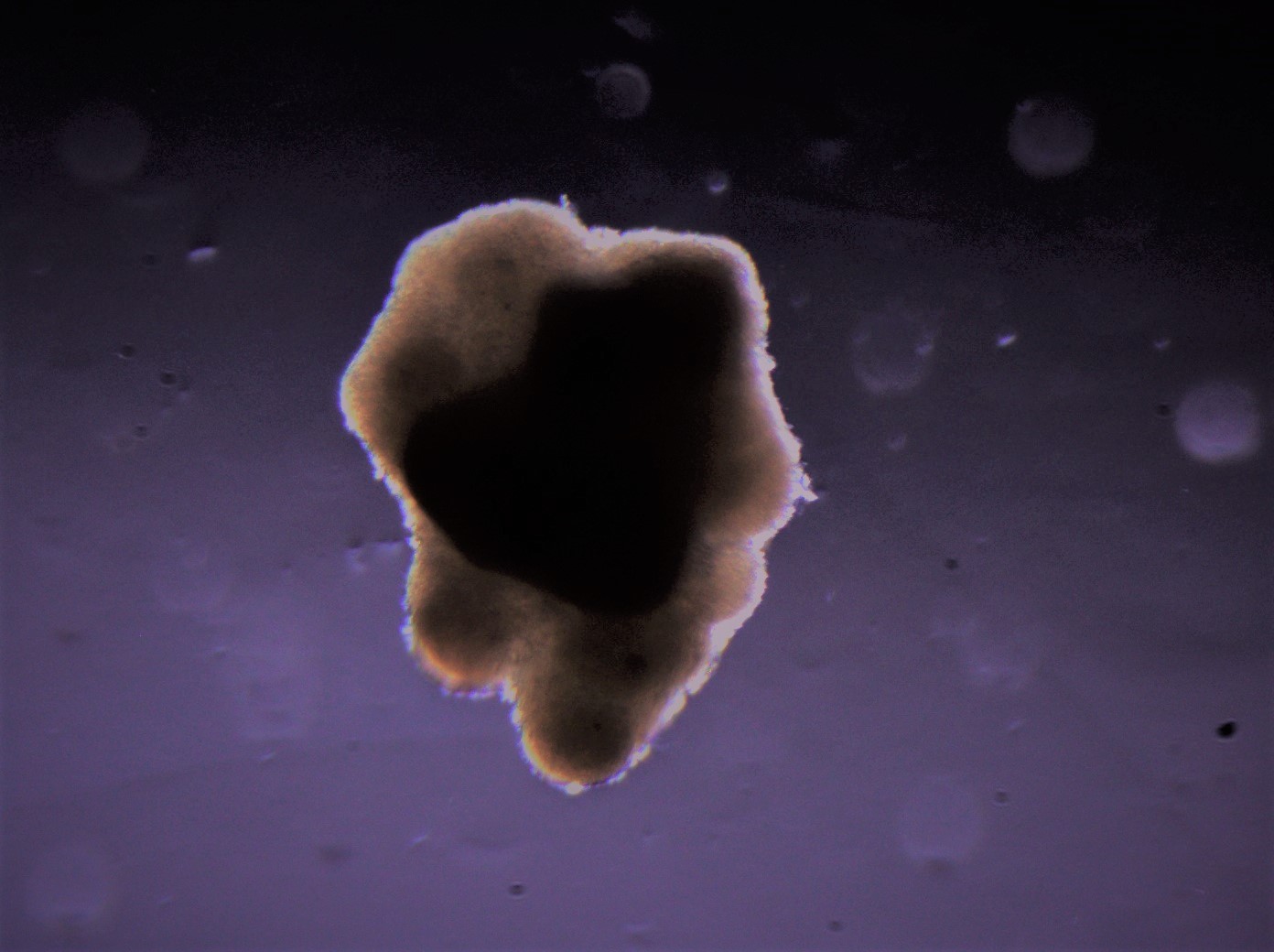Meat Grown in Space for the First Time Ever
This cultivated meat is "slaughter-free."
For the first time ever, meat was created in space — but no animals were harmed in the making of this 3D bioprinted "space beef."
Aleph Farms, an Israeli food company, announced today (Oct. 7) that its experiment aboard the International Space Station resulted in the first-ever lab-grown meat in space. The company focuses on growing cultivated beef steaks, or growing an entire piece of real, edible meat out of just a couple of cells, in this case, bovine cell spheroids, in a lab.
On the space station, the experiment involved growing a piece of meat by mimicking a cow's natural muscle-tissue regeneration process. Aleph Farms collaborated with the Russian company 3D Bioprinting Solutions and two U.S.-based food companies to test this method in space.
Video: Space Beef: Growing Meat in Space Explained
More: The Evolution of Space Food in Pictures

On Sept. 26, the team established a proof of concept when the astronauts performing the test were able to produce a small piece of cow muscle tissue on the space station. The experiment took place inside of a 3D bioprinter developed by 3D Bioprinting Solutions. Bioprinting is a process in which biomaterials, like animal cells, are mixed with growth factors and the material "bioink," and "printed" into a layered structure. In this case, the resulting structure is a piece of muscle tissue.
The "3D bioprinter is equipped with a magnetic force which aggregated the cells into one small-scaled tissue, which is what meat is constructed by," Yoav Reisler, an external relations manager at Aleph Farms, told Space.com in an email.
But, while 3D bioprinting has been used and tested on Earth for things like producing cartilage tissue, it works a little differently in space. "Maturing of bioprinted organs and tissues in zero gravity proceeds much faster than in Earth gravity conditions. The tissue is being printed from all sides simultaneously, like making a snowball, while most other bioprinters create it layer by layer. On Earth, the cells always fall downward. In zero gravity, they hang in space and interfere only with each other. Layer by layer printing in gravity requires a support structure. Printing in zero gravity allows tissue to be created only with cell material, without any intermediate support," Reisler added.
Get the Space.com Newsletter
Breaking space news, the latest updates on rocket launches, skywatching events and more!
Related: Space Food Photos: What Astronauts Eat in Orbit

The reasoning behind Aleph Farm's efforts to produce "slaughter-free meat in space," as the company describes it, is because of climate change, according to a press release sent by the company to Space.com. Animal farming, as it is noted in the 2019 Intergovernmental Panel on Climate Change special report, with its requirement for huge amounts of water and energy, contributes in a significant way to climate change.
"Our planet is on fire and we have no other one today. Our primary goal is to make sure it remains the same blue planet we know also with our next generations," Reisler said.
"In space, we don't have 10,000 or 15,000 Liter (3962.58 Gallon) of water available to produce one Kg (2.205 Pound) of beef," Didier Toubia, Co-Founder and CEO of Aleph Farms, said in the release. "This joint experiment marks a significant first step toward achieving our vision to ensure food security for generations to come, while preserving our natural resources."
The company aims to build upon the success of this proof of concept experiment and, within a few years or so, make cultivated beef steaks available on Earth through "bio-farms" where they will grow this meat, Reisler added.
- International Experiments Selected for China's Space Station
- Why We Need Active Experiments in Space (Op-Ed)
- Rocket On! These Cool Student Experiments Just Launched to Space
Follow Chelsea Gohd on Twitter @chelsea_gohd. Follow us on Twitter @Spacedotcom and on Facebook.
Join our Space Forums to keep talking space on the latest missions, night sky and more! And if you have a news tip, correction or comment, let us know at: community@space.com.

Chelsea “Foxanne” Gohd joined Space.com in 2018 and is now a Senior Writer, writing about everything from climate change to planetary science and human spaceflight in both articles and on-camera in videos. With a degree in Public Health and biological sciences, Chelsea has written and worked for institutions including the American Museum of Natural History, Scientific American, Discover Magazine Blog, Astronomy Magazine and Live Science. When not writing, editing or filming something space-y, Chelsea "Foxanne" Gohd is writing music and performing as Foxanne, even launching a song to space in 2021 with Inspiration4. You can follow her on Twitter @chelsea_gohd and @foxannemusic.









